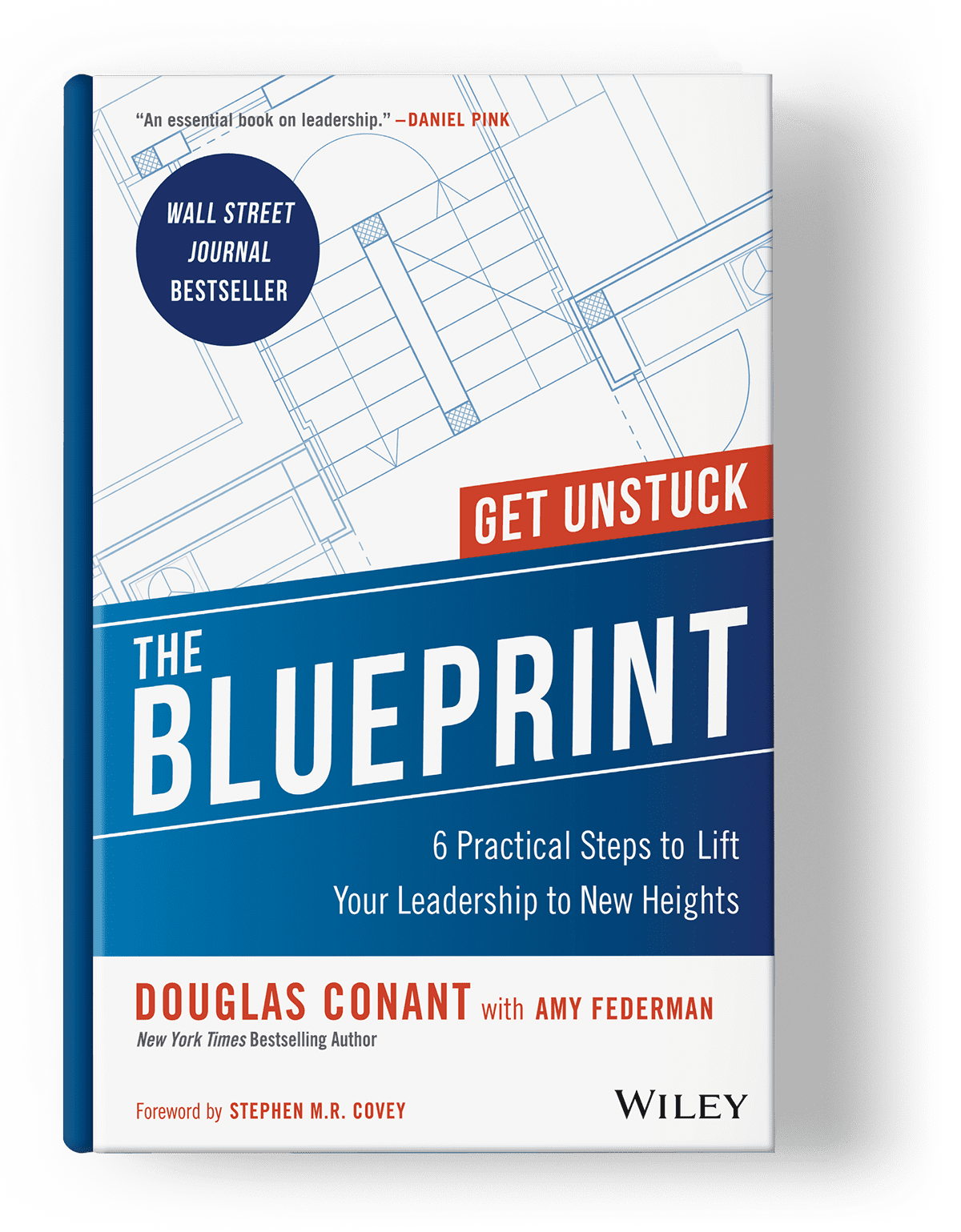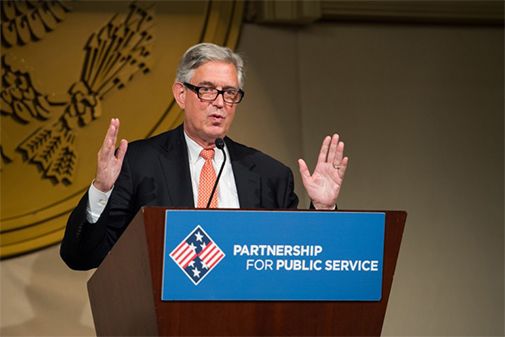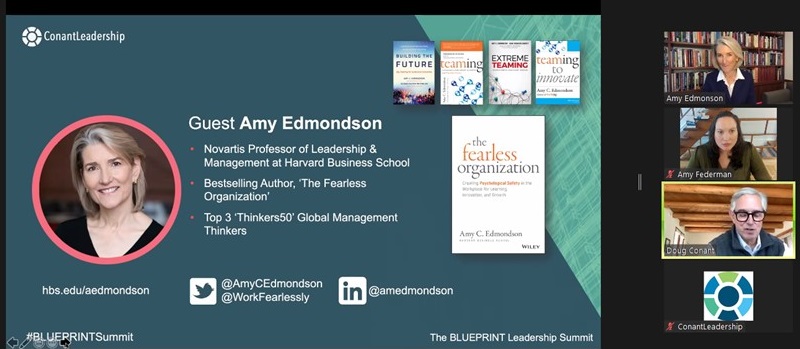‘Not All Fun and Games and Ice Cream’ — Amy Edmondson and Doug Conant on How to Harness the Power of Psychological Safety
This fall, ConantLeadership hosted our second bi-annual BLUEPRINT Leadership Summit, a free meeting of the top leadership minds and luminaries in the business space.
We were honored to have Amy Edmondson—the scholar who coined the term, “psychological safety,” Novartis Professor of Leadership and Management at Harvard Business School, bestselling author of The Fearless Organization, and the recently crowned Thinkers50 #1 Global Management Thinker—join us in conversation with Doug Conant, Founder of ConantLeadership Chairman of CECP (Chief Executives for Corporate Purpose), the former CEO of Campbell Soup Company, and bestselling author of The Blueprint and TouchPoints.
Together, they talked about how to harness the power of psychological safety, defined by Edmondson during the summit as: “A sense of permission for candor,” and: “A climate characterized by belief that interpersonal risks like speaking up with ideas, concerns, questions, and mistakes won’t be penalized,” which creates, “an environment where you know that you can speak up without penalty.”
Enjoy the following smart tips from Amy Edmondson and Doug Conant for understanding and creating psychological safety. (And you can watch the full video of this summit session here. To skip intros and housekeeping, fast forward to minute 07:45.)
Over 1,000 peer reviewed papers point to the benefits of psychological safety including its positive impact on learning behavior, innovation, team performance, and even reduction of morbidity and mortality in ICU environments. So it’s important for leaders to understand the following key takeaways.
‘Work Is Work’ and Should Be ‘Effort-Full’
The first thing Edmondson emphasizes is that while psychological safety is positive and essential, learning to create its conditions is not “easy or effortless,” or some warm-and-fuzzy undertaking that’s all “fun and games and ice cream.” Like anything worth pursuing, it takes “work to create it,” and “it’s supposed to be effort-full,” because “work is work,” and psychological safety provides an opportunity to become “less distracted by worries about what people will think of you and more consumed by doing a great job with your colleagues.”
Conant adds that the responsibility for this work is a “two-way street,” with the onus being both on the organization and on individuals. Edmondson agrees that when everyone feels safer to speak up, then teams can get engaged in “continuous learning in service of a worthy goal—a goal that has a strong purpose associated with it,” and that in turn creates deeper relationships and mutual learning: “I learn about the task, I learn about my colleagues, my colleagues learn about me.”
Edmondson uses the metaphor of a car: “Purpose, motivation, and an exciting goal” are the fuel, “but the vehicle won’t run if the brakes are on.” Psychological safety is like “taking your foot off the brakes so you’re not holding yourself back.” And Conant agrees that leaders should embrace the challenge of “fueling the car” by building a culture that fosters the feeling of “an incredible learning experience” every day.
Make It ‘Discussable’
Conant talks about the importance of leveraging the principle of candor to build a “learning environment” that is conducive to employees being more fully engaged in their work. To that end, he asks Edmondson how leaders can best bring psychological safety out of the conceptual realm and bring it to life “in the real world?”
Edmondson says that the overarching recommendation is: “Make it discussable—make the challenge of creating real, true candor at work” a topic of conversation. And there are four steps she nests underneath the umbrella of discuss-ability.
- Name the goal. Expressly state the desire to speak candidly, acknowledging that it isn’t easy, and map it back to the business goals e.g., “We can’t do excellent work in an uncertain world without the psychological safety” to speak freely. Keep making the case and re-iterating the intent.
- Put purpose first. Continuously return to the motivation for the effort and remember that purpose is part of the “fuel” in the team’s engine. Learn to tell a “compelling story” about the work your organization does, why it matters, and how it can make “a better world.”
- Invite engagement. “The invitation for people to speak up has to be explicit, not just implicit.” It’s crucial to continuously invite people to use their voice—not in a passive, suggestion-box format—but actively in conversation e.g., “I need to hear from you. What are you seeing? Tell us what you learned.”
- Respond productively. It’s important that you are prepared to not only hear “good news, good ideas, or happy talk,” but that when people take your invitation for candor seriously, you will also hear things “that you really don’t like.” Don’t respond with “fakery,” or pretend to love it because that’s “bad and transparent and won’t work,” but you can engage with a two-part “productive response,” that leads with appreciation. Start by saying “thank you” to the person for sharing their feedback and then “look forward,” by asking either, “how can I help, what do you need, or where do we go from here?”
Conant agrees that these steps are crucial to employee engagement and fomenting psychological safety and observes that leaders must become better at “leading by listening.” In order to implement these steps he says: “You need to slow down and listen before you leap in as a leader,” because “it’s hard for people to listen to you if they don’t believe you’ve listened to them first.”
And then, to move things forward, always begin with the four words advocated by Edmondson that are also a long-loved mantra of Conant’s: “How Can I Help?” Conant finds going into interactions with a service orientation and a helper’s mindset is “liberating” because it shifts the focus from you as the leader to “the people you’re working with and trying to achieve a greater good.” And he’s observed, “the more I helped people, the more they were helpful to me, and the more fulfilling the relationships became,” and the safer both parties felt.
Empower a ‘Problem-Solving’ Mindset
Conant celebrates the tremendous upside of psychological safety in his own experience leading turnarounds at Nabisco and Campbell Soup Company where he was able to propagate “pockets of amazing performance,” all built on a foundation of “making it safe for people to engage.” While he also notes that there is no downside to nurturing candor, there is a distinction between creating safe environments for people to vocally contribute, and unwittingly creating “a discussion group around people’s dissatisfactions.”
Edmondson agrees and clarifies that psychological safety is not a blank check to complain: “We don’t want to empower the victim mindset. We want to empower the problem-solving mindset.” In fact, she specifically puts “license to whine” on her list of things that psychological safety is not. Yes, she explains, you should encourage people to speak up about what’s not working, but not with a spirit of griping (because that doesn’t help to resolve issues), but with the goal of moving things forward.
It’s useful to understand that “psychological safety is necessary but not sufficient to having productive conversations.” You will also need the skills to frame it around problem-solving rather than venting—skills like “the art of asking good questions,” “the art of perspective-taking,” and the art of “acknowledging each other’s views,” rather than listening only to “react or push back.” And Conant’s mantra of “How can I help?” is key in keeping the focus on advancing the organization’s goals rather than letting things get off track into an unproductive pity party.
‘The Knowing Has to Go’
Both panelists advocate for “humble listening” as a central competency in building psychological safety. Conant thinks of humble listening as, borrowing from Stephen Covey, “seeking first to understand” rather than to be understood. He says this approach helps him bring his best to any situation because “if people genuinely believe that I’m trying to understand, we seem to move further and faster,” and the relationship becomes more reciprocal with the other party trying harder to understand his point of view, too.
Edmondson warns that a roadblock to listening with humility is “the basic human challenge—which is that it’s hard to learn if you already know.” She observes that people often erroneously believe that they already know what their teammate or employee is going to say, when the reality is that they may have no idea. To become more skilled in candid conversations, leaders should release the idea of certainty and dismiss the idea that they can predict what is about to be said: “The knowing has to go so that the learning and listening can start.”
Both panelists are unanimous on this point: Listen with genuine curiosity—to learn and deepen your understanding—rather than to interject, solve, or retort.
As you go forth to harness the power of this approach and forge more psychologically safe teams and behaviors, heed the combined guidance of our panelists: Remember it will take work, make it discussable, empower a problem-solving mindset, and practice humble listening.
About the Author: Amy Federman is ConantLeadership’s Director of Content and Editor in Chief and co-author with Doug Conant of the WSJ bestseller, The Blueprint.
Enjoyed these insights?
For more advice about psychological safety, explore the full video recording of this summit session here, engage with our suite of written leadership resources here, buy your copy of Amy Edmondson’s book, The Fearless Organization, here, or start your Blueprint journey here.
Ready to step into your full leadership potential and receive personal leadership training directly from Doug Conant? Attend our signature leadership development program, The BLUEPRINT Boot Camp by ConantLeadership, a 2-day leadership intensive offering elite-level, highly interactive training with Doug and a community of your peers. Learn more here or set up a complimentary consultation call here.
(Header photo by Sagar Patil on Unsplash)

“Doug Conant is remarkable—and so is this work.“
– Stephen M. R. Covey
Author of The Speed of Trust

The Blueprint
6 Practical Steps to Lift Your Leadership to New Heights
By Douglas Conant with Amy Federman

Have Doug Speak at Your Event
Doug works collaboratively with event organizers to customize his material for each audience.





0 Comments